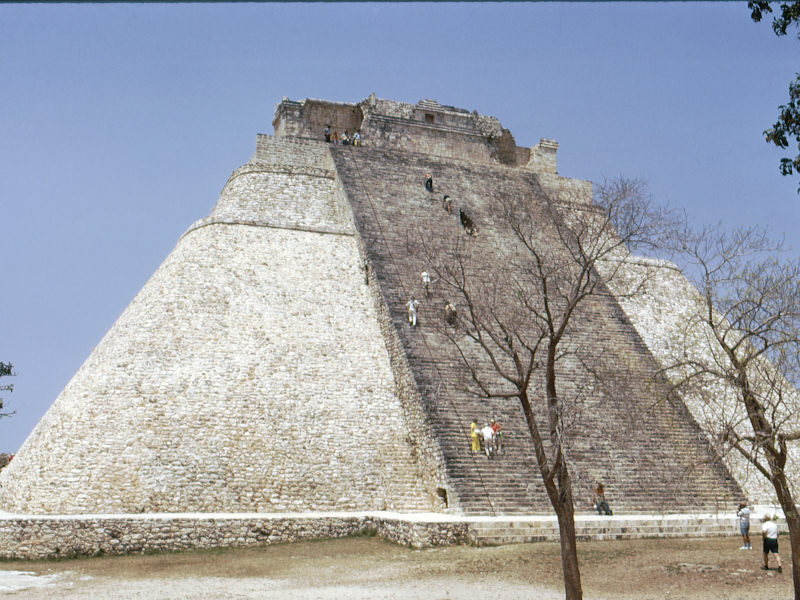
Photo album: "Mexico, Yucatán: Uxmal"
Fly over a photo with the mouse to enlarge it
Click on a photo to open it in a new window
The
next excursion, still on Tuesday March 17th, 1973, is the visit of the
archaeological site of Uxmal. This site is situated approximately 80 kilometres
south of Mérida. Uxmal was founded in the 6th century B.C. and became, later,
the main ceremonial centre of the Puuc civilization. Around the year 900, began
the decline of the city and Uxmal was, later, abandoned, probably, after a long
period of extreme drought.
We leave Mérida, in the evening, on Wednesday March 28th, after having spent
the day walking in the town. We take advantage of a last day, on Thursday March
29th, to visit Mexico City and we leave Mexico, at noon, on
Friday March 30th, 1973.
 |
Downward view from the first platform of the Pyramid of the Soothsayer, in front of the entrance of the temple. |
 |
Front view of the Pyramid of the Soothsayer. The stairway leads to the temple called "the house of the soothsayer". |
 |
This structure had been called by the Spanish conquerors, the Nunnery Quadrangle. It is formed by four buildings (totalising 74 rooms) around a large rectangular plaza. |
 |
The Nunnery Quadrangle: Detail of masks of Chaac, the god of rain, surrounded with geometrical drawings. |
 |
The Nunnery Quadrangle: The Temple of Venus. |
 |
The Nunnery Quadrangle: The typically shaped entrance arch. |
 |
View through the entrance arch of the Nunnery Quadrangle. |
 |
The Nunnery Quadrangle: Doors, surmounted with bas relief carvings, opening to the inside of a building. |
 |
The Nunnery Quadrangle: Door surmounted with masks of Chaac, the god of rain. |
 |
Panorama of Uxmal with the two main monuments: On the left, the Nunnery Quadrangle and, on the right, the Pyramid of the Soothsayer. |
 |
Back to Mérida, on Wednesday March 28th, this is a modern monument whose style reminds us, though, the style of the sites we have visited: It is the Monument of the Nation, situated Paseo Montejo. |
 |
The carvings on the Monument of the Nation recall the history of Mexico, from its beginning until 1956, the year the monument has been built. |
.
.
.
.
.
.
.